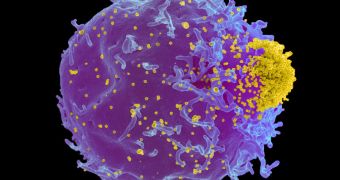A group of researchers at the University of Utah proposes a new explanation for why vertebrates including humans and rats still hold on to numerous genetic variants that make them susceptible for being infected by foreign pathogens, or triggering autoimmune diseases.
The genetic variants the team focused its efforts on are responsible for producing immune-system proteins named MHC, which are major histocompatibility complexes. They can be found on the surface of most cells in vertebrate animals.
Their main role is to differentiate between the body's own proteins and those belonging to invading pathogens, such as viruses and bacteria. Needless to say, when the recognition mechanism fails, the MHC can trigger immune responses when detecting the body's own proteins.
This is what is called an autoimmune disease, when the immune system is led to believe that certain tissues and proteins are foreign, even though they are our own. Our natural defenses will then attempt to destroy the faux invaders as soon as possible.
In addition to contributing to protein identification, MHC-class molecules also play an important role in determining whether the body will accept a transplanted organ or not. In order to understand why these disaster-prone proteins still endure in vertebrates, scientists turned to genetically-altered lab mice.
“Results of this study explain why there are so many versions of the MHC genes, and why the ones that cause susceptibility to diseases are being maintained and not eliminated,” biologist Wayne Potts says.
“They are involved in a never-ending 'arms race' that causes them, at any point in time, to be good against some infections but bad against other infections and autoimmune diseases,” the expert adds.
Genes and germs are entwined into what experts call “antagonistic co-evolution,” which is essentially a race to see which can develop the necessary mechanisms to beat the others faster. The study is published in the esteemed journal Proceedings of the National Academy of Sciences (PNAS).
Using funds from the US National Science Foundation (NSF) and the National Institute of Allergy and Infectious Diseases (NIAID), investigators at the University of Utah say that the infection-prone MHC are actually very good at counteracting new infections, from previously-unknown sources.
“This study demonstrates that trade-offs between MHC genotypes and the severity of pathogen effects are key factors maintaining that diversity. The work has important implications for agricultural practice and conservation genetics, as well as human health,” says George Gilchrist.
He holds an appointment as the acting deputy director of NSF Division of Environmental Biology.

 14 DAY TRIAL //
14 DAY TRIAL //